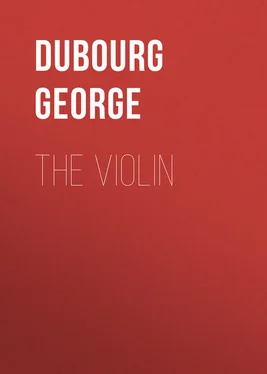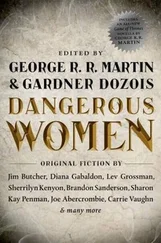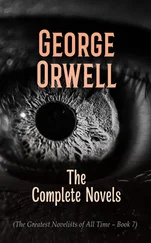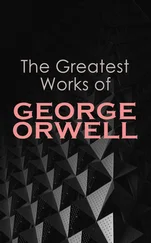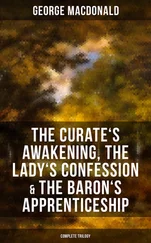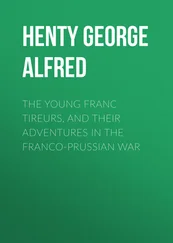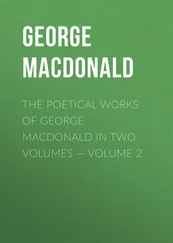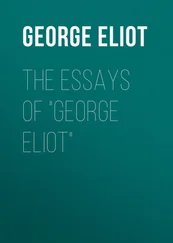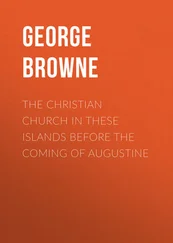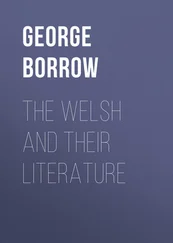George Dubourg - The Violin
Здесь есть возможность читать онлайн «George Dubourg - The Violin» — ознакомительный отрывок электронной книги совершенно бесплатно, а после прочтения отрывка купить полную версию. В некоторых случаях можно слушать аудио, скачать через торрент в формате fb2 и присутствует краткое содержание. Жанр: foreign_antique, foreign_prose, на английском языке. Описание произведения, (предисловие) а так же отзывы посетителей доступны на портале библиотеки ЛибКат.
- Название:The Violin
- Автор:
- Жанр:
- Год:неизвестен
- ISBN:нет данных
- Рейтинг книги:5 / 5. Голосов: 1
-
Избранное:Добавить в избранное
- Отзывы:
-
Ваша оценка:
- 100
- 1
- 2
- 3
- 4
- 5
The Violin: краткое содержание, описание и аннотация
Предлагаем к чтению аннотацию, описание, краткое содержание или предисловие (зависит от того, что написал сам автор книги «The Violin»). Если вы не нашли необходимую информацию о книге — напишите в комментариях, мы постараемся отыскать её.
The Violin — читать онлайн ознакомительный отрывок
Ниже представлен текст книги, разбитый по страницам. Система сохранения места последней прочитанной страницы, позволяет с удобством читать онлайн бесплатно книгу «The Violin», без необходимости каждый раз заново искать на чём Вы остановились. Поставьте закладку, и сможете в любой момент перейти на страницу, на которой закончили чтение.
Интервал:
Закладка:
The world is grown so slight! full of new fangles,
And takes its chief delight in jingle-jangles,
With fiddle-noises , &c.
CHAPTER II
THE ITALIAN SCHOOL
“Oh! known the earliest, and esteemed the most”
Byron.Having shown, on such evidence as I have been able to adduce, that the Italians are, most probably, the rightful claimants of the distinction which attaches to the invention of the modern or true violin, it is now to be considered by what bright array of names, by what successive efforts of skill and genius, they have likewise become entitled to the greater distinction of having been the first to develop the wonderful powers of the instrument, and the chief agents through whom its charming dominion in the realms of music was diffused, ere the great German composers, in more recent days, applied their powers to the extension and enrichment of the field for stringed instruments.
In casting a glance over the catalogue of bright Italian names, we find two, that demand to be especially noted for their great influence in advancing the progress of the “leading instrument,” and that serve indeed to mark two main epochs in its history. These are Corelli and Viotti – the first constituting the head of the old school, the last that of the modern; and each (it may be parenthetically said) almost as interesting to contemplate in personal character, as in professional eminence. The intermediate names, most entitled to attention, are Tartini, Geminiani and Giardini. These, with others of considerable celebrity, though of less effective influence in the formation of what we have designated the Italian School, will be here noticed critically and biographically, according to their several pretensions and proceedings. Before we come to Corelli, however, there are some few to be treated of in the character of his predecessors, and as having prepared the way for his more dignified and important career.
Baltazarini has been already designated as the earliest violin-player of real eminence that the annals of music present to notice. His celebrity was much extended by the transplanting of his talent into France, where he acquired the new appellation of De Beaujoyeux, by virtue of the delight he afforded to a people whose natural gaiety of temperament could not but assort happily with the lighter range of sounds so readily evoked from the violin. It was in 1577, that Baltazarini, with a band of violins , was sent from Piedmont by Marshal Brissac to Queen Catherine de Medicis, who appointed him her “Premier Valet de Chambre,” and Master of her Band. France has reason to be grateful to his memory, and Italy may fairly be proud of it.
Giuseppe Guami, organist of Lucca Cathedral, who published, in 1586, some voluminous compositions belonging to the class of cantiones sacræ , or motetts, is cited by Draudius, in his “Bibliotheca Classica,” as an excellent performer on the violin.
Another early violinist, Agostino Aggazzari, born of a noble family at Siena, and a scholar of Viadana, appears to have been the first who introduced instrumental Concertos into the Church; though Dr. Burney supposes that these Concertos must only be understood in the very qualified sense of Salmi Concertati , or psalms accompanied with violins; and he adds, that Concertos merely instrumental, either for the church or chamber, seem to have had no existence till about the time of Corelli.
Carlo Farina, of Mantua, who published, in 1628, a Collection of “Pavans and Sonatas” for the violin, is recorded by Walther (in his Musical Lexicon), as having figured in the service of the Elector of Saxony, as a celebrated performer on the instrument.
Michael Angelo Rossi, a composer, as well as an able violinist, signalized himself somewhat oddly at Rome, in 1632, by performing the part of Apollo, in a musical drama, with the violin as the expressive symbol and exponent of his melodial powers, instead of the classically attributed lyre. The strangeness of the anomaly was doubtless lost sight of amidst the enjoyment it was the means of conferring: nor would the example, were it taken up in our own times, by a competent artist, be likely to fail in producing a similar subserviency of taste to pleasure.
If, in these days, the man who plays Apollo
Like charms could conjure from the fiddle’s hollow,
We , too, should find the heaven-descended lyre
Omitted “by particular desire!”
And Phœbus, fitted with a fiddle so,
Would dart fresh wonders from his newer bow !
Though there was only one violin employed (observes Dr. Burney) in the first operas by Jacopo Peri and Monteverdi, yet, as the musical drama improved, and the orchestra was augmented, the superiority of that instrument was soon discovered by its effects, not only in the theatre, but in private performances; and the most eminent masters, without knowing much of its peculiar genius or powers, thought it no degradation to compose pieces expressly for the use of its votaries. Among the most early of these productions, may be ranked the Suonate per Chiesa of Legrenzi, published at Venice, 1655; Suonate da Chiesa e Camera , 1656; Una Muta di Suonate (a Variety of Sonatas), 1664; and Suonate a due Violini e Violone , 1677.
The next individual of eminence in connexion with the instrument is Giambattista Bassani, of Bologna, whose name derives additional lustre from his having been the violin-master of Corelli. Bassani was a man of extensive knowledge and abilities in his art, having been a successful composer for the church, the theatre and the chamber, between the years 1680 and 1703, as well as an excellent performer on the violin. His sonatas for that instrument, and his accompaniments for it to his masses, motetts, psalms and cantatas, manifest a knowledge of the finger-board and the bow, which appears in the works of no other composer anterior to Corelli; and the lovers of the pure harmony and simple melody of that admirable master, would still receive great pleasure from the performance of Bassani’s sonatas for violins and a bass. Specimens of Bassani’s music may be found in Latrobe’s and Stephens’s Selections.
The names of Torelli, Valentini, and the elder Veracini, may be dismissed with a brief mention; because, though of eminence in their day, they are not connected with any very marked influence on the art; and the published works which they have given to the world have long since attained a dormant state. It should be observed, however, as illustrating the very capricious nature of fashion , that Valentini for a while eclipsed Corelli himself in popularity.
Arcangelo Corelli, under whose able direction the violin may be said to have first acquired the definite character and regulated honors of a school , 14 Footnote_14 That the Italians (says M. Choron) have perfected every sort of vocal composition, is generally agreed; but a fact which is apt to be overlooked, is that they have been the instructors of all Europe in instrumental composition, and that to them we are indebted for the first and most esteemed models in that department of the art. It is the Italians who invented all the various kinds of instrumental music which we have called single pieces or solos, from the sonata to the concerto. In violin music, Corelli, Tartini, and their pupils, preceded the composers of all the other nations of Europe, to whom they have served as models. The same may be said with regard to the harpsichord, from Frescobaldi to Clementi. All other single pieces have been constructed on the model of the compositions for the two instruments just named.
was a native of Fusignano, a town situated near Imola, in the territory of Bologna, and was born in the month of February, 1653. His first instructor was Matteo Simonelli, by whom he was taught the rudiments of music, and the art of practical composition; but, the genius of Corelli leading him to prefer secular to ecclesiastical music, he afterwards became a disciple of Bassani.
Интервал:
Закладка:
Похожие книги на «The Violin»
Представляем Вашему вниманию похожие книги на «The Violin» списком для выбора. Мы отобрали схожую по названию и смыслу литературу в надежде предоставить читателям больше вариантов отыскать новые, интересные, ещё непрочитанные произведения.
Обсуждение, отзывы о книге «The Violin» и просто собственные мнения читателей. Оставьте ваши комментарии, напишите, что Вы думаете о произведении, его смысле или главных героях. Укажите что конкретно понравилось, а что нет, и почему Вы так считаете.
